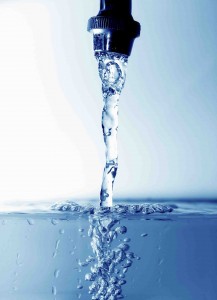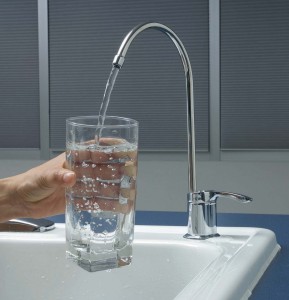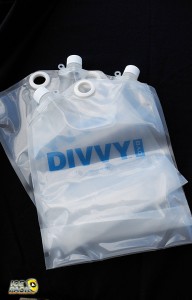This article is a continuation of Part I of the Water Filtration Facts and Fiction that I had posted last week in which I reviewed several  different aspects for which consumers should be on the lookout when determining which water filtration system to purchase. Today I’m going to delve into greater detail with just ONE of those aspects. Sorry, but contrary to my thinking that I could do this all in a Part II version I was SO wrong and totally underestimated last week just how much material I had to cover, thus I’ve decided there is still at least another part of this series to come. Besides. I’m a girl. I can change my mind 99.9999% of the time if I want to, right? So, today I’m going to discuss the “nines” in the water filtration industry. This is, in my opinion, one of the two most common areas of misinformation in the water filtration and treatment industry.
different aspects for which consumers should be on the lookout when determining which water filtration system to purchase. Today I’m going to delve into greater detail with just ONE of those aspects. Sorry, but contrary to my thinking that I could do this all in a Part II version I was SO wrong and totally underestimated last week just how much material I had to cover, thus I’ve decided there is still at least another part of this series to come. Besides. I’m a girl. I can change my mind 99.9999% of the time if I want to, right? So, today I’m going to discuss the “nines” in the water filtration industry. This is, in my opinion, one of the two most common areas of misinformation in the water filtration and treatment industry.
What’s the meaning of the “Nines” in water filtration?
Manufacturers will typically claim that their devices rid your water of a certain percentage of bacteria, cysts, viruses, etc. When you see one manufacturer claim “99.9%” and another claim “99.9999%” you may just think that one copywriter is more zealous than another. But there is actually a standard established by NSF as to how many logs (nines) that a filter must remove for specific types of contaminants. As such, you may actually see a manufacturer show the proper number of nines but they will also use some misleading words or symbols prior to those nines. I got so dizzy trying to understand the system behind this practice that I had to reach out to an expert, Dennis Brown of Aquamira. Dennis Brown is one of the few individuals I know I can trust to shoot straight with me in the water filtration industry. In fact, he actually resigned from a successful career in the pharmaceutical industry, one which benefited from his water purification designs. He left that industry in pursuit of his passion of providing quality potable water solutions for the world without any of the standard marketing practice nonsense. His filtration and treatment products are used daily all over the world among recreation, military,  government, humanitarian, and commercial organizations which provide him with an active pulse and a great deal of feedback on their performance. I can’t expect for much more than that. (Let’s all say “Thank you, Dennis” for his generous contribution of time and expertise on several phone calls to help me navigate my way through the Nine Jungle!)
government, humanitarian, and commercial organizations which provide him with an active pulse and a great deal of feedback on their performance. I can’t expect for much more than that. (Let’s all say “Thank you, Dennis” for his generous contribution of time and expertise on several phone calls to help me navigate my way through the Nine Jungle!)
The importance of a symbol in understanding water filtration figures:
Before you get all impressed with just how many nines are used by a manufacturer conveyed in their marketing claims, pay special attention to the words and symbols in front of that number. Be very wary of words like ‘up to’ and ‘virtually’ in filter claims. As Dennis puts it, “both mean ‘almost’ or ‘not quite.” Science is one of the few things in life that can provide us with exactness. Water filtration is a science. If you’re reading a manufacturer’s claims and you see any of these types of “warm fuzzy” words, run away—far, far away. As an example, mosey on over to this popular brand website. Look in their very first paragraph. They state that their filter “removes up to 99.99% of the contaminants and pollutants”. (I’ll get into what else is wrong with the phrasing in a moment.) In fact, I found such “feel good, mean nothing” phrases such as “up to” used over 25 times on their corporate website before I decided I’d rather watch reruns of Gilligan’s Island than continue! Additionally, pay close attention to the “greater than” and “less than” signs. I, for one, suspect that these water filtration companies expect you to have forgotten which sign means what when they are describing their water filtration effectiveness. You don’t believe me? Then why in the heck do they all USE such a symbol to indicate what type of filtration success you can expect? Is it written in  some kind of secret water engineering book somewhere? Just for clarification, the rule of thumb is that the small end of the V laying on its side (< or >) always points to the smaller component. For example, if you went to the Aquamira site right now and checked out the technology of their newest addition, the Divvy System, you would see that the test results show that it took care of GREATER THAN >99.99% virus, >99.9999% of bacteria, and removal of >99.9% of protozoan cysts. Whereas on four other sites (which brand names I won’t list here because I just may be opening myself up for a lawsuit even IF what I state is as plain as day TRUE) I see their test results saying “<99.99%” and even “<68.9999%”! Yes, that means that they are saying that their test results for bacteria manifested LESS THAN 99% and 68% respectively! Yum. No way can you get me to sign up and actually pay for that kind of water filtration. I can get that kind of “safe” using any ice dispenser at nearly any restaurant in the country. Now I can understand why Mr. Brown said, “the (percentage) number may look good, sound good, and is warm and fuzzy but is nothing more than a huge legal ruse.” Now, understanding that each type of contaminant has its own standard for the number of logs that must be removed and, it’s important that you keep in your cell phone or just plain memorize which contaminants require which number of log testing.
some kind of secret water engineering book somewhere? Just for clarification, the rule of thumb is that the small end of the V laying on its side (< or >) always points to the smaller component. For example, if you went to the Aquamira site right now and checked out the technology of their newest addition, the Divvy System, you would see that the test results show that it took care of GREATER THAN >99.99% virus, >99.9999% of bacteria, and removal of >99.9% of protozoan cysts. Whereas on four other sites (which brand names I won’t list here because I just may be opening myself up for a lawsuit even IF what I state is as plain as day TRUE) I see their test results saying “<99.99%” and even “<68.9999%”! Yes, that means that they are saying that their test results for bacteria manifested LESS THAN 99% and 68% respectively! Yum. No way can you get me to sign up and actually pay for that kind of water filtration. I can get that kind of “safe” using any ice dispenser at nearly any restaurant in the country. Now I can understand why Mr. Brown said, “the (percentage) number may look good, sound good, and is warm and fuzzy but is nothing more than a huge legal ruse.” Now, understanding that each type of contaminant has its own standard for the number of logs that must be removed and, it’s important that you keep in your cell phone or just plain memorize which contaminants require which number of log testing.
“Be leery of filters that claim to remove 99.99% bacteria. Since the NSF Standard is 99.9999%, any claim less than that is misleading, and should not be made.”—Dennis Brown, Aquamira
Last week I addressed this aspect from a very simplistic point of view, but Dennis gave me a much better appreciation of this frequently used fallacy. I previously mentioned that there are a standard number of logs that MUST be removed for each type of contaminant in order to have any bearing on the performance of the filtration device, and I gave an only partial explanation for this. The more appropriate information about this again comes from our Aquamira expert. Each 9/log indicated in the testing means that particular filter removed 10 times more organisms than the previous 9. When a water filtration company says that their water filtration system removes 99.99% of e-coli, that sounds pretty impressive, so a person thinks they are safe. But the standard NSF  challenge requirement is six 9’s/logs, so that means they are two 9’s/logs off; which means that tens of thousands additional organisms got through. Can you imagine a water filter manufacturer admitting that?? The lesser 9’s/logs for cysts and viruses is adequate because it requires fewer of them to get you sick. But any manufacturer who tries to tell you that they did such a great job testing their water at 2, 3, or 4 logs on bacteria is definitely sorely mistaken and it’s YOUR LIFE and well-being at stake. As a further example, let’s say that we pitted two filters against each other. Both were challenged with 1 million organisms per 1 ml of water. Filter A removed all of them. Filter B had 10,000 left after filtering. This could conceivably result in a label of Filter A you put 99.9999 (6 logs) and Filter B 99.99% Obviously, Filter A is the better test result. As a reminder: bacteria requires a minimum of 6 logs removal testing, viruses: 4 logs of removal, and protozoan cysts require 3 logs of removal of testing. So now do you understand what is wrong with a manufacturer giving a blanket statement that their filter takes care of “99.99% of all contaminants”? Remember, not all contaminants are equal any more than a .22 rifle is just as good as a .45 when you’re up against a bear!
challenge requirement is six 9’s/logs, so that means they are two 9’s/logs off; which means that tens of thousands additional organisms got through. Can you imagine a water filter manufacturer admitting that?? The lesser 9’s/logs for cysts and viruses is adequate because it requires fewer of them to get you sick. But any manufacturer who tries to tell you that they did such a great job testing their water at 2, 3, or 4 logs on bacteria is definitely sorely mistaken and it’s YOUR LIFE and well-being at stake. As a further example, let’s say that we pitted two filters against each other. Both were challenged with 1 million organisms per 1 ml of water. Filter A removed all of them. Filter B had 10,000 left after filtering. This could conceivably result in a label of Filter A you put 99.9999 (6 logs) and Filter B 99.99% Obviously, Filter A is the better test result. As a reminder: bacteria requires a minimum of 6 logs removal testing, viruses: 4 logs of removal, and protozoan cysts require 3 logs of removal of testing. So now do you understand what is wrong with a manufacturer giving a blanket statement that their filter takes care of “99.99% of all contaminants”? Remember, not all contaminants are equal any more than a .22 rifle is just as good as a .45 when you’re up against a bear!  One of the things that really frosted me about two of the most well-known water filter sites was that they had conflicting test results there. Three 9’s, four 9’s, six 9’s. Bottom line, pay attention to the NINES. As Dennis says, “They sound really good on a piece of marketing literature but all it is is a huge disclaimer that the manufacturer is buffalo-ing the consumer and absolves them of a liability claim”. Another stunt these water filtration companies pull is combining the nines to come up with their testing figures. For example, they will do the testing on one compartment of their system and get a three log or 99.9% removal of contaminants, (such as when testing for protozoa), and then they use the 2nd stage of their filter and get similar 3 log removal—for three more logs—for a total of 6 logs, right? 6 logs! That’s good enough for bacteria, right? WRONG-o! Sounds like someone might be employing the same man Clinton hired to come up with the “real” number for CPI. Ahem… As Dennis says, “you can’t add the nines. It just doesn’t work that way.” Next, it never gets any better than the 9’s, folks. Run far away from any manufacturer that says that they tested for bacteria, cysts, viruses, etc. and they got a 100% removal rate. It’s scientifically impossible to come up with a 100% number just as it’s impossible to see the true end of Pi. 100% is statistically impossible because you can’t challenge it with enough bacteria to derive the 100%
One of the things that really frosted me about two of the most well-known water filter sites was that they had conflicting test results there. Three 9’s, four 9’s, six 9’s. Bottom line, pay attention to the NINES. As Dennis says, “They sound really good on a piece of marketing literature but all it is is a huge disclaimer that the manufacturer is buffalo-ing the consumer and absolves them of a liability claim”. Another stunt these water filtration companies pull is combining the nines to come up with their testing figures. For example, they will do the testing on one compartment of their system and get a three log or 99.9% removal of contaminants, (such as when testing for protozoa), and then they use the 2nd stage of their filter and get similar 3 log removal—for three more logs—for a total of 6 logs, right? 6 logs! That’s good enough for bacteria, right? WRONG-o! Sounds like someone might be employing the same man Clinton hired to come up with the “real” number for CPI. Ahem… As Dennis says, “you can’t add the nines. It just doesn’t work that way.” Next, it never gets any better than the 9’s, folks. Run far away from any manufacturer that says that they tested for bacteria, cysts, viruses, etc. and they got a 100% removal rate. It’s scientifically impossible to come up with a 100% number just as it’s impossible to see the true end of Pi. 100% is statistically impossible because you can’t challenge it with enough bacteria to derive the 100%  conclusion. Also, remember, the term “non-detect” is NOT better than a “99.99%” A claim of “non-detect” for contaminants after going through a filter should always be held up against the standard number of logs/nines that the contaminant requires. Big deal if you can find no detection of bacteria at three 9’s. We’ve all seen a kid clean up their room only to find everything stashed and smashed in the closet and under the bed, right? (Remember, we’re talking about a industry and government standard here. When have you found that such standards were way this side of safe? Ambien, anyone? Cigarette? Ford Pinto? Vioxx?) I don’t know about you, but I want to stay as far away from the little buggers in my water as possible. If they don’t test far enough for contaminants, then it’s the same thing. You’re not checking thoroughly enough. Remember, each log, or each 9 reported, used in the testing, represents 10 times more organisms removed than the previous 9. In other words the 4th 9 in the number 99.99% represents ten times more organisms removed than the third 9 in the number expressed as 99.9%. So which would you rather have? A filter that removes 99.9% of the contaminants or 99.99%? Bottom line, remember that there’s no law that says you can’t sell a crappy water filter so long as you divulge to the consumer just how awful that filter is. And hey, if you can confuse them, why not; right? So, Consumer Beware—of the nines, that is. (If you’d like to read any of the writings of Dennis Brown and/or articles that he suggests, simply go to www.aquamira.com/suggested-links ) Author’s Note: I know that many of you were anxious for “part II” of this article so that I could share with you my findings on specific units. I apologize for disappointing you, but I felt that I really wasn’t doing the topic justice without getting into the nitty gritty of each significant component of the standards for water filters. As such, I anticipate spending another 2 or 3 articles exploring this topic. But please feel free to use what I share in each one of these articles to determine which water filtration unit is best for you. I intend them to be thorough enough for that purpose. I also want to note that even though I quote Mr. Dennis Brown repeatedly in this article, he is in no way responsible for its content. So if any one finds fault worthy of litigation or complaint in this article, I take full responsibility for the content written herein.
conclusion. Also, remember, the term “non-detect” is NOT better than a “99.99%” A claim of “non-detect” for contaminants after going through a filter should always be held up against the standard number of logs/nines that the contaminant requires. Big deal if you can find no detection of bacteria at three 9’s. We’ve all seen a kid clean up their room only to find everything stashed and smashed in the closet and under the bed, right? (Remember, we’re talking about a industry and government standard here. When have you found that such standards were way this side of safe? Ambien, anyone? Cigarette? Ford Pinto? Vioxx?) I don’t know about you, but I want to stay as far away from the little buggers in my water as possible. If they don’t test far enough for contaminants, then it’s the same thing. You’re not checking thoroughly enough. Remember, each log, or each 9 reported, used in the testing, represents 10 times more organisms removed than the previous 9. In other words the 4th 9 in the number 99.99% represents ten times more organisms removed than the third 9 in the number expressed as 99.9%. So which would you rather have? A filter that removes 99.9% of the contaminants or 99.99%? Bottom line, remember that there’s no law that says you can’t sell a crappy water filter so long as you divulge to the consumer just how awful that filter is. And hey, if you can confuse them, why not; right? So, Consumer Beware—of the nines, that is. (If you’d like to read any of the writings of Dennis Brown and/or articles that he suggests, simply go to www.aquamira.com/suggested-links ) Author’s Note: I know that many of you were anxious for “part II” of this article so that I could share with you my findings on specific units. I apologize for disappointing you, but I felt that I really wasn’t doing the topic justice without getting into the nitty gritty of each significant component of the standards for water filters. As such, I anticipate spending another 2 or 3 articles exploring this topic. But please feel free to use what I share in each one of these articles to determine which water filtration unit is best for you. I intend them to be thorough enough for that purpose. I also want to note that even though I quote Mr. Dennis Brown repeatedly in this article, he is in no way responsible for its content. So if any one finds fault worthy of litigation or complaint in this article, I take full responsibility for the content written herein.



30 Comments
Thoreau · January 20, 2012 at 1:06 pm
Bacteria can grow in water, so a sample of contaminated water can have a large number bacteria. That is why you need more 9’s for safety. Pathogenic viruses don’t grow in water, they need human cells as hosts, so there would be fewer viruses in a water sample; hence, fewer 9s. Cysts and parasites would also be present in smaller numbers in water, so again, fewer 9’s.
SteveE · January 21, 2012 at 2:22 am
Many cysts and parasites are larger than bacteria. In an emergency situation, sand filtration (yes, running the water thru sand) would help eliminate most of these. Further treatment by boiling, chlorinating/chemical sanitatization would be recommended. Of course, the filtration would not filter out bacteria, so a separate methods, as listed above, should be employed to assure that the water was safe.
Glenn · January 20, 2012 at 11:33 pm
Great post. Thanks for all the research and passing it along to all of us. I’m curious about something though. Given that the discussion in the post revolves around percentages of effectiveness, how am I to interpret things when the marketing spin comes from a completely different angle? For instance, one filter I looked at states that it eliminates contaminants greater than .2 microns in size. Did your research uncover anything related to particle size? My apologies if I missed something. I skimmed back through part 1 and didn’t see anything discussing particle size in microns.
Kellene Bishop · January 21, 2012 at 12:58 am
You didn’t miss anything. It’s just that I have to write a whole other article to address the micron issue. I started with the 9’s first and will move on from there. 🙂
Donnella · January 21, 2012 at 12:39 am
Thanks Kellene, this information was really worth waiting for. I’m going to the website of my current unit now and look forward to your recommendations for my next one.
AutumnGal · January 21, 2012 at 1:51 am
Man, now I don’t feel so dumb for not understanding all I’d been reading… Thanks so much and if it requires a bunch of issues to help it make sense to us, then so be it… And yes you do have that female right to change your mind anytime you want ! It will be to our benefit 🙂
Thanks again, Kellene!
Jerry · January 21, 2012 at 3:35 pm
Ok, so what filter should I buy?
Pamala Bagley · January 22, 2012 at 3:04 am
Thanks again Kellene for a great article! I am more than happy to wait for the next ones to come out because it is great information. I think I absorb it better when it comes in little bites instead of one huge one. It has helped with my confusion and luckily prevented me from buying a unit that would not have been in my best interest.
Pamala Bagley · January 22, 2012 at 4:04 am
I read on a site for Berkey the Black Berkey® Purifier Elements are the most powerful gravity filtering solution, certified to eliminate pathogenic bacteria to the EPA’s “7 Log” purification standard of 99.99999% reduction. Can they say something like this on their site if it is not true? Should I be wary of the “to the EPA’s” verbiage? Shouldn’t there be a report or something like that which verifies this information? You really get me thinking and paying attention to things Kellene! Thank you!
Kellene Bishop · January 22, 2012 at 4:12 am
The EPA doesn’t have a 7 log requirement for potable water. Claiming to be the “most powerful” solution is suspect as well. And yes, you should be able to see the actual testing results–especially with something like this. Remember, the numbers of logs removed isn’t relevant unless you know what baseline was used.
Pamala Bagley · January 22, 2012 at 5:42 am
Thank you Kellene for responding so quickly. When it seems too good to be true it usually is! When I couldn’t find the actual test numbers or the validation of the testing results a red flag went up! I would not have thought twice about it unless I had read your articles! Thank you again for looking out for all of us and educating us in preparedness.
Preparedness Pro - Kellene Bishop · February 3, 2012 at 1:47 am
Dennis at Aquamira is indeed an expert in water filtration. I wouldn’t have any problem recommending any of their products.
tboice · February 18, 2012 at 4:23 am
Every water filter out on the market says it’s the best, so it’s hard for consumers to know what claims are really true. Consumers can see which filters have been tested and certified to prove their claims at http://www.nsf.org There are 2 standards – one certifies that a filter can remove odor and taste (pretty easy to do); the other standard certifies that the filter can remove contaminants of health concern…that’s the standard you want to pay attention to.
Bob VA · February 19, 2012 at 10:37 pm
http://www.sawyerproducts.com/SP194.htm
We ordered the Sawyer Model# SP194 (4-liter gravity system) today before we found your enlightening info. Thank you for your in-depth research presented for laymen. This Sawyer filters 99.997 virus (>4 logs) / 99.99999 bacteria (7 logs) / 99.9999 protozoa (6 logs). I did extensive research before we ordered, but we’ll cancel the order in a heartbeat if we sniff any deception. Do you have any insight to share on this particular Sawyer?
Becky · May 2, 2012 at 4:41 am
Thank you, thank you!
My friend and I have been trying to decide which unit would work for her family. She has grandchildren and would like to make sure they have the best water system to drink from without all the bugs. Now I have to ship this to my niece for her family. Understanding the “9”‘s system and what to look for will assist my friends and family. We were reading all the hype and assuming we were going to buy the best for cleaning the water for consumption.
Barbara Grigg · July 16, 2012 at 2:45 am
Probably a dumb question, but what about swimming pool water in an emergency? About 20K gallons of it, with a mesh cover. With power, we could keep it chlorinated, if that’s necessary. Boiling? Other? Sorry if I’ve missed this somewhere on your site. I am new.
Kellene Bishop · July 16, 2012 at 4:19 am
I don’t think it’s a dumb question. It’s a plan that many people are planning on for their emergency water scenarios, but it’s a bad idea for a whole lot of reasons–external pollutants and contaminants that can’t be safely removed by any many. Also, leaving your “fortress” to get water is vulnerable and yet would be expected by anyone who was watching closely. In times of trial it would also be difficult to secure from others both two legged and 4 legged critters.
Jen · December 1, 2012 at 7:46 pm
Hi Kellene,
You mention the threat of “leaving your fortress” in the event of an emergency–a valid concern. Yet, I planned on doing cooking with a solar oven in the event of an emergency, and that requires me to leave my fortress, too.
What is your backup means of baking bread when you cannot leave to use the solar oven?
Kellene Bishop · December 2, 2012 at 5:25 am
Anyone will have to leave their home to use a solar oven. The issue is whether or not their “fortress” is secure enough to use a solar oven right outside their door. In my case, I’m planning on that. There are a litany of alternative ways to cook which I address on this blog. You can click on the “Fuel Preparedness” icon in the carousel for more suggestions.
Kathryn Harvey · October 10, 2012 at 5:46 pm
So I have the same question another reader had…I didn’t see an answer. What filter/bottles/straws do you have or use? I was looking at the Lifestraw. Have you checked that out at all?
Kellene Bishop · October 11, 2012 at 3:26 am
I don’t believe now that any of the straws have the security that they attempt to portray.
Ashley · November 6, 2012 at 7:16 pm
Is there a part three…what water filtration systems do you recommend for home use?
Thanks SO much for all this leg work you have learned and shared!
Bette Denison · January 2, 2013 at 10:50 pm
We are needing a water filter and I have read both of your articles but do not see where you recommend any or is the Aquamira the one you think is best?
Bette Denison · January 2, 2013 at 10:50 pm
Does COSTCO sell it?
Kellene Bishop · January 3, 2013 at 7:15 am
Just go to http://www.aquamira.com. Anything they offer, I’m confident, will do exactly what they claim it will do.
TAm · January 11, 2013 at 9:06 am
I went to the aquamira site, but didn’t see where they have a home filtration unit, nor the divvy system referenced in your article, are you still planning more articles in this series, I’m still unsure of what unit I should be buying.
I’d really be interested in knowing what YOUR plans are for this critical preparedness item. I’ve read in other articles here on the site about using DE as a filter, but don’t know how to go about having a “total” plan for safe water. This article answered alot of questions, but still leaves me unprepared/
Kellene Bishop · March 28, 2013 at 3:15 am
Every household requires multiple methods of water filtration as there are different types of water crises. Aquamira most definitely has all that a person needs and they are more than happy to answer questions pertinent to one’s personal and unique situation.
fab · March 27, 2013 at 11:58 pm
I’m sorry! the prices are on the website and they are well out of my range. This is something that a few neighbours might want to get together and purchase on. Maybe your church group or whatever.
Once again way way out of my range. Would be nice to get one and be the hero of the neighbourhood…..lol.
Fab
Kellene Bishop · March 28, 2013 at 3:13 am
Um…yah…it’s not something ONE person would need as it will help an entire community. “community”…something way too many preppers eliminate from their vocabulary.
Gerri · August 23, 2013 at 8:35 am
Wonderful info–thanks! Eagerly looking forward to Part III. Am searching for a good filtration system for home & emergencies.
Comments are closed.